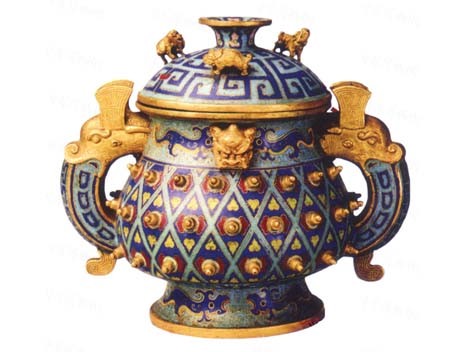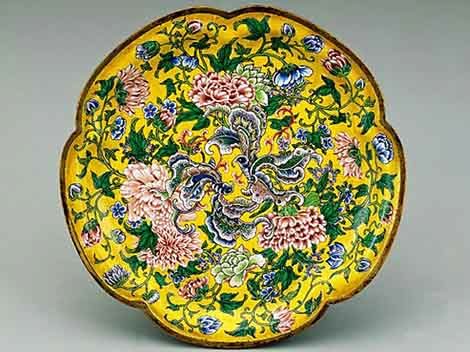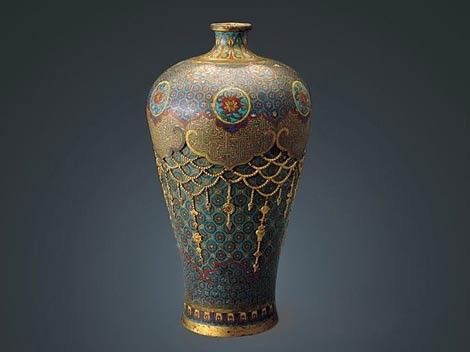
Cloisonne (Jingtai Lan) is a famous traditional craftwork made by a unique technology combining the porcelain with copper. While making Cloisonne, the red copper is made into a body on which the craftsman draws pictures and sticks out the pattern lines with the copper wire according to the drawn pictures. And then enamel glaze materials with different colors are enchased in the patterns. The copper body is polished and gilt after repeated sintering so that it is also called "filigree enamel with copper body". As it was very popular in Jingtai Period of the Ming Dynasty, it is usually called "Jingtai Lan".

Beijing is the cradle of Cloisonne technology and the extant earliest Cloisonne was made in the Yuan Dynasty. The original Cloisonne was mostly the archaized bronze vessel, among which the Cloisonne produced in Xuande Period of the Ming Dynasty was most exquisite. And then during the Jingtai Period, namely from 1450 to 1456 A.D., the craftsmen found a blue-black glaze material. The craftwork made of this material is elegant and decent. That is the Cloisonne still in use nowadays.

The Cloisonne craftworks are much favored in interior decoration. The products include larger ones such as hall screens, stools, chairs, and desks, and smaller ones like chopsticks, ear rings, candy tin, toothpick canister, and smoking set etc. There are the artworks especially for collection and appreciation, but also the daily living commodities. The Cloisonne, Fujian bodiless lacquer ware, and Jingdezhen porcelain are known as the "Three Treasures".





